Menu
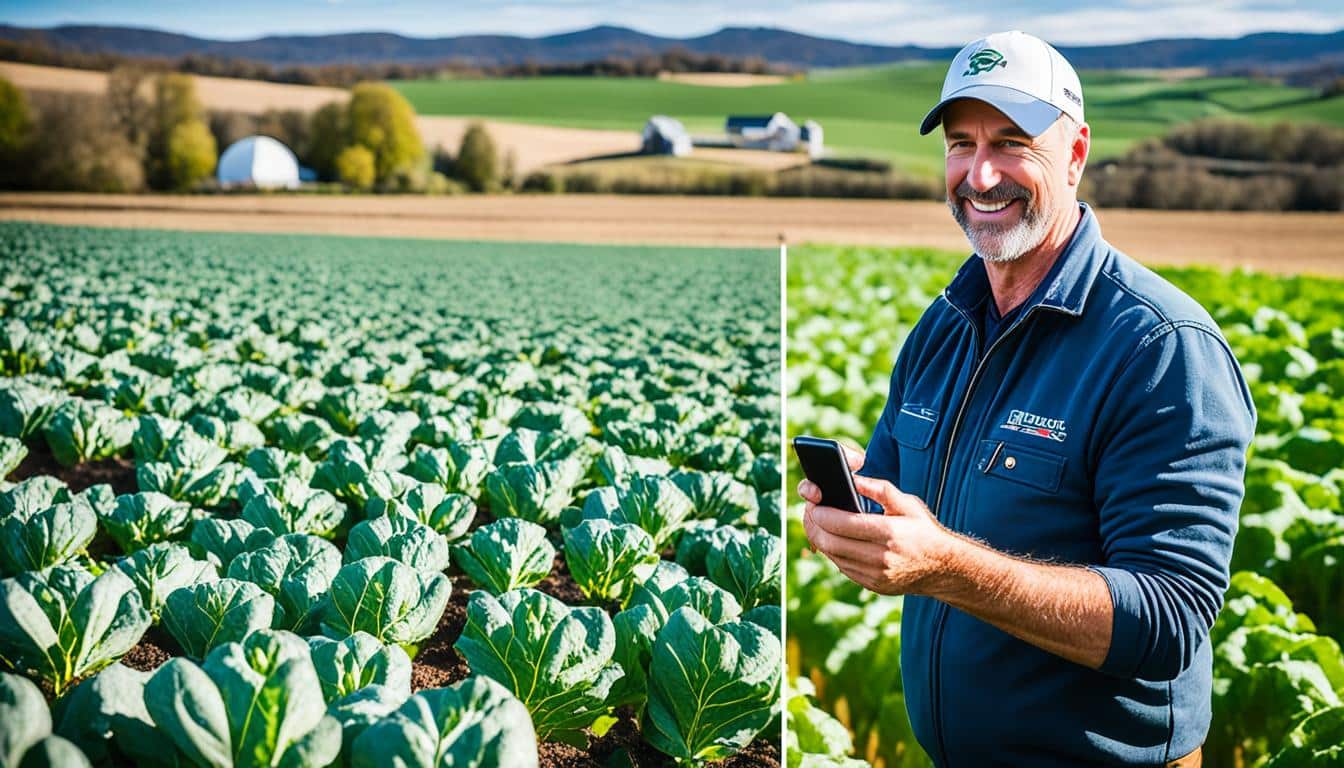
Turbow Farms saw a huge 138.84% boost in engagement on Instagram Reels in 2023. This shows how powerful social media can be in farming. In the modern age, a strong online presence is key for farms. About 80% of farmers use social media for information and decisions.
This section will look at detailed case studies of effective social media strategies in farming. Both free and paid social media have helped farms grow their marketing and connect with people. It’s crucial for farms to use digital tools to stay ahead and get closer to their customers.
Youthful farmers are using Facebook, Instagram, and even TikTok to learn and connect. This shows the need for farms to have a smart social media and online marketing strategy. This can help them reach out to their audiences and increase sales.
Social media is now vital in farming. It’s changed how farmers sell. Instead of just using prints and shows, they’re using many online ways. Reviews show this has cut costs and made more people want to buy.
In places like South-South Nigeria, apps like WhatsApp and Instagram are key for ads now. This change in ads is part of a big move towards digital ways in farming.
Farmers are more open to new tech thanks to the Technology Acceptance Model (TAM). And the Theory of Agricultural Marketing Cooperatives explains this by saying digital tools help sell farm goods better. I’ve seen this work well, with other experts recommending tweeting twice daily for success.
Hanna Welch from grist.org has a smart way of organising her social media work. She splits her day to research, plan, and putting plans into action equally. She also suggests joining private Facebook groups to get advice fast and make managing social media simpler.
| Date | Review | Outcome |
|---|---|---|
| 2021 Aug 10 | Impact Analysis | Cost Reduction |
| 2021 Mar 19 | Adoption Rates | Increased Demand |
| 2021 Feb 23 | Channel Utilisation | Enhanced Engagement |
| 2021 Feb 16 | Strategy Review | Optimised Results |
Farmers are quickly moving onto social media, changing how they reach out in agriculture. About 80% of them use apps like WhatsApp, Instagram, and Facebook a lot. This shift makes their markets broader and pushes them to plan their online strategies.
In South-South Nigeria, a study showed that using social media cut costs in selling and made more people want products. They used special tests to see this. Now, farmers and buyers talk without words online, focusing on what’s good, when it’s there, and where to get it.

This shift to social media happened because old ways like newspapers and TV had limits. In Garmsar Township, Iran, better technology made selling agricultural products 57% better. Connecting online helps with tricky problems, especially for a new kind of farmer used to the digital world.
It’s vital for farming businesses to look at others doing well on social media. Facebook, a top choice, and Twitter follow in helping people talk about what they both love and need. Also, YouTube is big for sharing videos that inspire.
It’s smart to mix using social media with old selling ways. Knowing who you talk to helps a lot in making good posts. Teaming up with influential farmers and giving helpful tips can change what others buy.
A well-thought-out plan on social media builds strong ties with farming communities. It makes sure these relationships last, helping everyone sell more and better.
| Platform | Main Users | Content Type | Impact |
|---|---|---|---|
| Majority of decision-makers | Informative posts, videos | High engagement and wide reach | |
| Slightly younger audience | Topical issues, experiences | Quick and broad visibility | |
| YouTube | Visual learners | Video content | High influence and engagement |
| Peer-to-peer communications | Instant messaging | Direct and personal interaction | |
| Younger farmers | Visual storytelling | Engaging and visually appealing |
Social media has hugely changed agribusiness, especially through online marketing. Platforms like WhatsApp and Instagram are key in South-South Nigeria. They make things more efficient and boost farmers’ earnings. This shows how much mobiles help in developing countries, linking farmers to helpful info.
Using the Technology Acceptance Model (TAM), studies show people are eager to use the web for farming decisions. Research confirms that social media use cuts marketing costs and boosts product sales. This makes social media very beneficial for agribusinesses.
Social media truly helps farmers make better choices and advertise their products at a low cost. Shockingly, only 26% of agribusinesses are using social media well. But, this small group has seen big improvements in how they market their goods.
I believe social media is key for improving a brand’s image and understanding its customers. Big platforms like Facebook and Instagram help target ads to the right people. This makes connecting with customers much easier for businesses.
Agribusinesses are just starting to see the full potential of social media. It has been proven, with 57% improvement in advertising in towns like Garmsar, Iran. Its use in farming business is large and mostly untapped.
“Social media marketing is not just an option; it’s a necessity for contemporary agribusinesses aiming for competitiveness and growth.”
In the end, using online marketing and social media well can keep agribusinesses successful. They are great for building relationships and aiding farmers in their choices. A good social media plan can bring great rewards to agribusinesses.
Facebook is key for farmers, with about 80% using it often. For businesses in farming, using Facebook well is vital. It helps you connect better and build strong ties.
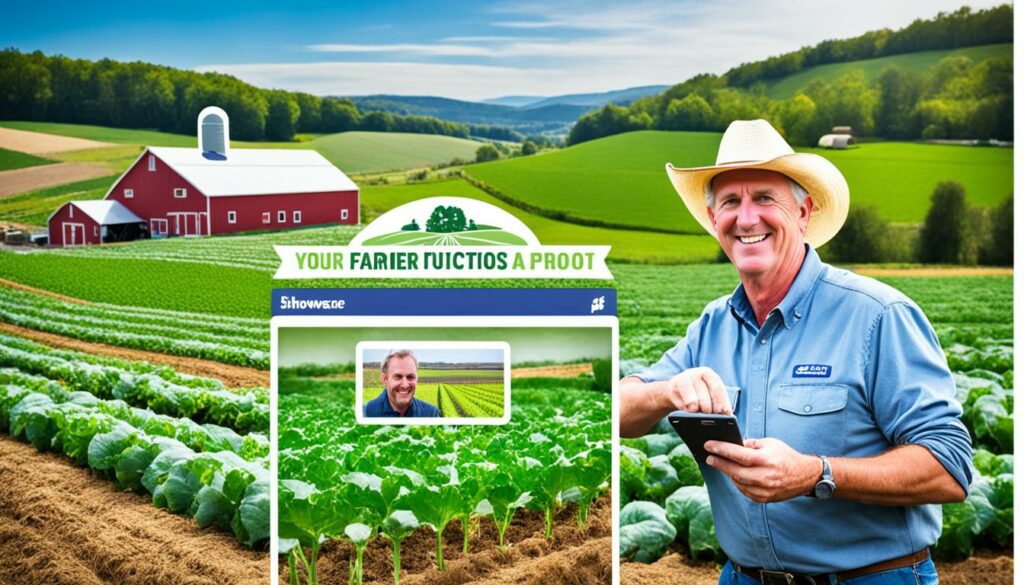
A great way to use Facebook for farming is by sharing interesting content. This includes regular updates, farming tips, and glimpses into daily farm life. This engages the farming community.
Also, using social media analytics for agriculture to see what content your audience likes is smart. It helps make your posts more effective.
Facebook Groups are great for farmers to chat, share knowledge, and ask for advice. Agribusinesses can be part of or create these groups to directly connect with farmers. This helps build a sense of community.
For brands, active participation in these Groups can boost trust and credibility. This leads to more loyalty among farmers.
For a strong Facebook strategy targeting farmers, consider these tips:
Following these strategies on Facebook can really boost your connection to farmers. It provides good examples of how to do well in social media for farming, using both insight and data.

Twitter is a vibrant platform for sharing farm info quickly. With a well-thought-out social media plan, farms and agribusinesses can better reach their followers. Using tools that analyse social media, like Google Analytics, improves your content’s effect and visibility. This article will explore why Twitter is key in getting the farming community involved.
On Twitter, influencers are key in steering conversations within agriculture. Working with these leaders helps businesses spread their message to a wider crowd. Google Analytics and Twitter Ads can show how well these influencers are doing. They help you understand which posts work best. This knowledge lets you tweak your social media plan to reach more people effectively.
To catch the farming community’s eye on Twitter, content must be enticing. You need to know what they like and what’s trendy. Facebook Insights and Google Analytics provide useful information. You can make things like infographics, short videos, and polls to engage them. It’s also important to keep up a steady stream of posts and use the right hashtags to catch people’s attention.
Hashtags are key for making your content easily found on Twitter. Choosing the right ones can pull in more readers. It’s good to pick hashtags popular in the agricultural world. HootSuite and TweetDeck can help keep an eye on how your hashtags are doing. This info helps you choose better tags in the future. Using hashtags well ensures your message gets to the right people.

| Tool | Purpose |
|---|---|
| Twitter Ads | Gather data on successful content for engaging farmers |
| Google Analytics | Provide insights into audience interests for content creation |
| Facebook Insights | Analyze demographics to understand the audience |
| TweetDeck | Monitor competitor strategies on social media |
| HootSuite | Offer valuable data on social media strategies by others in the farming industry |
By using the right tools and tactics, farms can make the most of Twitter’s ability to stir up fast and engaging conversations. Bringing in social media analysis fine-tunes these strategies, making sure your posts work well and connect with your audience.
YouTube is a big deal for farmers. It’s great for showing off products, teaching through case studies, and offering farming advice. About 80% of farmers use social media, with YouTube being one of their top choices.
Good farming videos on YouTube are detailed and show exactly what to do. They help agribusinesses teach a lot of people. Farmers use YouTube to find all sorts of farming info.
YouTube works really well with Facebook and Twitter too. Videos can reach all kinds of farmers, no matter their age or interests. This way, everyone gets to see the cool farming stuff being shared online.
Experts like Dr. Edward Evans and Ms. Grizelle De Los Reyes know how important videos are for social media. They say videos are key for keeping farmers interested online. Their advice has been backed by the USDA NIFA.
| Platform | Primary Use | Demographic |
|---|---|---|
| YouTube | Information & Training | All ages |
| Community Engagement | Older demographic | |
| Quick Updates | Younger demographic |
It’s key for businesses to use lots of platforms to connect with farmers. YouTube is essential for reaching a big audience. Sharing good content there is crucial for farming success online.
Times are changing in farming, and young farmers are turning to platforms like Instagram and TikTok for a new type of social media engagement. This change shows how important it is for agribusinesses to plan their social media strategies carefully. They need to use these digital tools well to connect with the younger generation.
Instagram is great for telling stories through photos and videos. It lets agribusinesses share the beauty and hard work of farming. With tools like Instagram Stories and IGTV, they can post updates quickly or share longer content. This keeps their followers interested and involved.
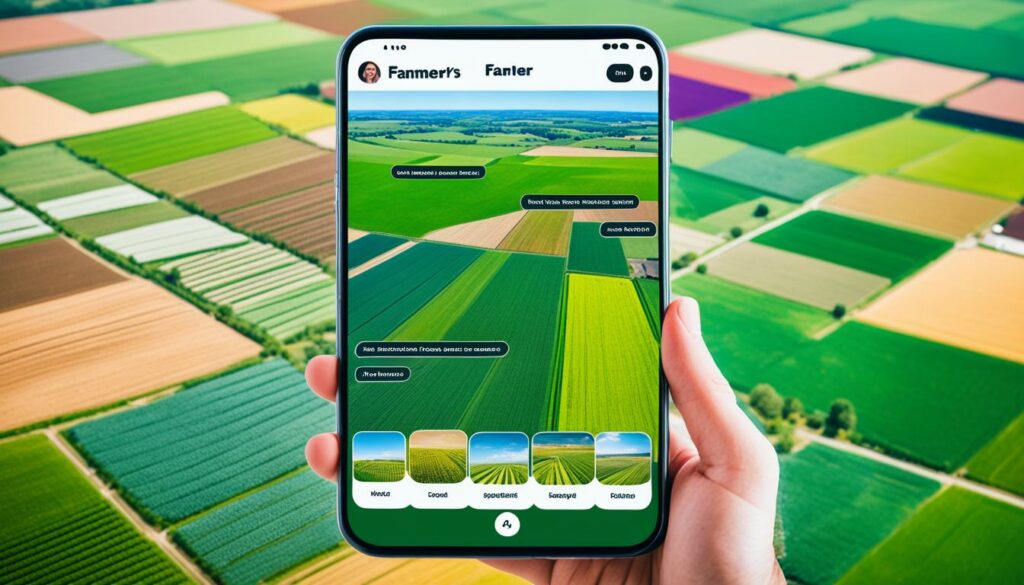
On the other hand, TikTok is a standout because it’s all about quick and fun content that many find easy to relate to. Imagine this: at a big climate conference, 29 TikToks caused almost 3,000 discussions. That’s a lot! TikTok’s style encourages light-hearted and funny talks, which makes discussions feel more friendly. Farmers say they connect with others more emotionally on TikTok than on other platforms.
Young farmers love using TikTok and Instagram, so agribusinesses should think of new, creative ways to catch their eye. Making content that touches hearts and minds can deepen the connection with these farmers. TikTok is especially good at sparking emotional reactions. But, there’s also a place for posts that teach something important.
Agribusinesses should keep using Instagram and TikTok because they’re important to the new generation of farmers. By knowing what each platform is good at, they can create strong bonds and keep their audience interested. Using the strengths of these tools can make marketing more effective, building loyalty and keeping people engaged.
| Platform | Primary Use | Engagement Style |
|---|---|---|
| Visual storytelling, quality content | Highly visual, narrative-driven | |
| TikTok | Quick engagement through entertaining content | Playful, humorous, rapid engagement |
Looking at successful social media in farming gives us deep insights. For instance, Southern Belle Farm saw big growth in 2020 by using social media well.
| Metrics | Website | ||
|---|---|---|---|
| Total Reach (Organic, Paid & Viral) | 15.8 million | 2.4 million | N/A |
| Engagement | 687.4k | 93,722 | N/A |
| Total Likes/Follows | 82,446 Likes | 25,590 Followers | N/A |
| Total Impressions | N/A | 4,044,432 | N/A |
| Total Users/Sessions/Pageviews | N/A | N/A | 344,316 Users, 577,643 Sessions, 1,505,489 Pageviews |
| New Followers in 2020 | N/A | 11,875 | N/A |
Farming case studies highlight the importance of using social media well. The success of platforms like Facebook and Instagram, with impressive reach figures, shows the power of online tools. Following these examples can improve visibility and customer relationships in farming.
Southern Belle Farm’s success on Facebook and Instagram is a great model. With over 687.4k engagements and 93,722 on Instagram, their online efforts paid off. They also significantly grew their follower numbers. This shows the value of smart social media use.
These cases prove the importance of digital strategies for farming outcomes. By concentrating on both organic and paid social media, farms can really boost their online presence. This leads to better sales and a stronger market position.
Social media analytics is a goldmine of data for agricultural businesses. It helps them perfect their marketing moves. This way, farmers can reach more people, spend less on marketing, and grow their profits. We’ll explore how to do this with tips and real-life examples.
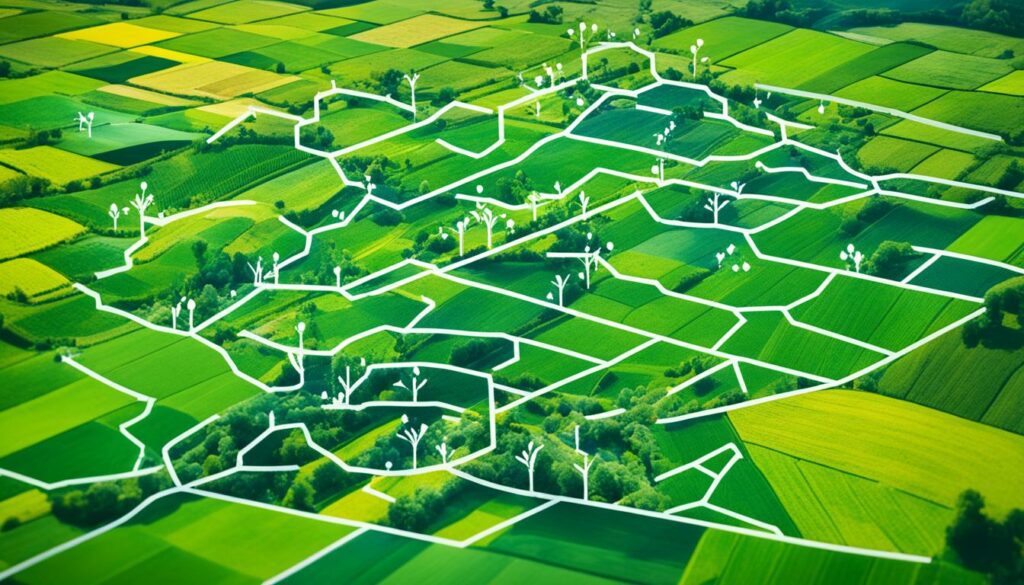
Social media analytics dive deep into who’s paying attention. They show patterns, demographics, and online habits. This data helps farmers tailor their online approaches to what their crowd wants. For example, research shows that using apps like WhatsApp and Instagram has helped sell more farm goods in some areas of Nigeria. It has also cut down on marketing costs there.
Figuring out if social media campaigns are working well is key. Studies and models like the Technology Acceptance Model highlight the importance of online marketing in farming. They prove that it lowers costs and drives up sales. Researchers have even found hard numbers showing social media boosts sales. So, keeping an eye on these stats is crucial for future marketing plans.
Using social media data to tweak content helps farmers connect better with their fans. It’s about finding what content works best, like video demos on YouTube or lively posts on Facebook. By knowing what young farmers like, such as Instagram and TikTok, agribusinesses can focus on these visual platforms. This makes their messages more compelling.
| Research Aspect | Findings |
|---|---|
| Cost of Marketing | Significantly Reduced |
| Demand for Products | Increased |
| Sales Turnover | Enhanced |
| Effective Platforms | WhatsApp, Instagram |
Using social media analytics in farming helps in a vast way. It lets farmers get closer to their audience and fine-tune their marketing. This means doing better work and getting more value for invested money.
Today, the choice between organic and paid social media campaigns is key in agriculture marketing. Both methods have their own benefits and drawbacks. A mix is often the best way to get the most out of these tools.
Organic social media works through natural interactions. For instance, Organic Mandi gained 200 new followers on Facebook in a month with organic content. This also led to an increase to 20 queries on Messenger. It shows how organic reach can improve direct communication and loyalty.
Paid social media, on the other hand, uses ads to target specific groups quickly. Google Ads helped agribusinesses increase sales by reaching a detailed audience. The goal is to use digital tools to create many leads.
Take the advice from the Southern Risk Management Education Center (SRMEC). They say a good strategy mixes both organic and paid efforts. Important steps include knowing what customers want, having clear marketing goals, and using both organic and paid methods. This makes for a smart strategy.
“The ultimate objective is to attract and retain customers by creating better value than competitors.” Always think about what your customers like and watch for any changes in the market, the SRMEC guide advises.
Organic campaigns are good because they:
Meanwhile, paid campaigns bring:
The trick is to know what both organic and paid media do best and to use them both wisely. By mixing attractive content and real talks with community and ads, you can make your marketing really work. This is the best way to get noticed and build connections in online agriculture marketing.
Understanding farmers is vital for social media strategies in agriculture. About 80% of them use social media. To be successful, you need to know what they like and tailor your approach accordingly. Let’s explore the main elements of strategic social media planning.
1. Know Your Audience: Farmers range in age and technology use. Older farmers prefer Facebook, YouTube, and Twitter. Younger ones enjoy TikTok and Instagram. So, it’s important to have a mix of online spaces. This ensures everyone finds the content interesting and relevant.
2. Content Relevance: Sharing useful and engaging content is crucial. Video content on platforms like YouTube can be very effective. It can show farming techniques or new products. This helps solve problems farmers face and influences their choices.
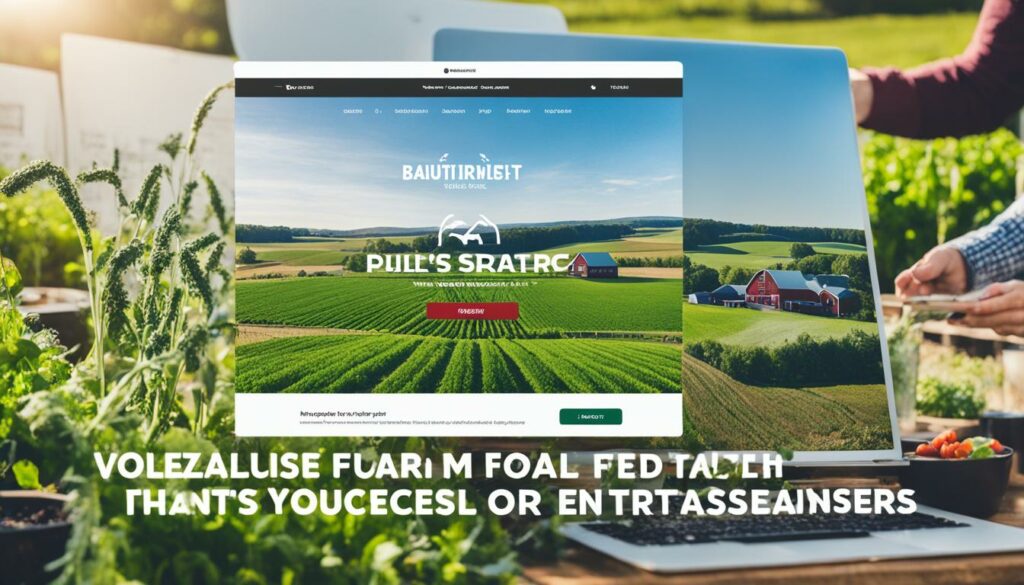
3. Analytics and Insights: Using analytics helps you know what’s working with your audience. This info is key for making smart choices in social media planning. Services like LinkedIn provide detailed data to help you improve your posts. This ensures a strong and trustworthy online image.
4. Consistency and Credibility: Posting regularly is a must. Daily LinkedIn posts can double your engagement. Leading companies, such as Cargill, use this to consistently share their values. This constant presence builds trust in the long run.
5. Multi-Platform Engagement: Different platforms target different audiences within farming. For instance, Facebook is big with 2.85 billion active users, while LinkedIn leads to many social media sales. A strategy that uses several platforms can reach more people. It can include farm giants on LinkedIn and young farmers on TikTok.
In summary, creating a strong social media strategy means knowing your audience, providing meaningful content, using analytics wisely, being consistent, and using different platforms. These steps help agribusinesses fully leverage social media. They can boost their visibility, earn trust, and achieve success.
In farming, social media greatly helps build trust and relationships. Instead of trusting smart farming tech companies, farmers prefer advice from fellow farmers on social media. This shows how important being real and relatable on these platforms is.
Being authentic is key to thriving on social media in farming. Farmers trust real and unedited stories, especially within their small communities. This trust is essential for strong relationships. Open and honest online talk makes farmers feel valued. It leads to everyone helping each other out, which is vital for long-lasting connections.
Developing strong bonds over time needs more than just being active online. It’s about having regular and meaningful talks. By studying who knows and influences whom, farming companies can better nurture connections. By becoming a valuable part of the community, they boost social capital. This means they help more, and people like them for it. Sharing the same values further ties them to the farming community.
Sharing UGC is a smart way to gain trust and look reliable. When fellow farmers share their own stories online, others pay attention. This flow of information is powerful and quick, helping the whole community grow.
Farming companies become trusted friends by encouraging such real stories. This trust turns into long-lasting loyalty. Genuine online chats and relationships in farming are strengthened by this.
Using Facebook, Twitter, and YouTube is key in farming social media. Posts and videos share information widely. Planning and checking analytics boost how many people see and interact with farm posts.
Social media helps farmers and agribusinesses connect better. It’s where many farmers go for info and to network. This online meeting place makes it easier to market to a large audience.
About 80% of farmers are active on social media. This means using social platforms well is vital in reaching them. Effective use of strategies and analytics is important in social media planning for farms.
Facebook is key in talking to farmers. It allows sharing and group interaction. By posting informative content, you can talk to and build relationships with farmers.
Twitter is good for quickly sharing farming info and news. It’s helpful in joining discussions through hashtags. The right planning and use of analytics can make Twitter a great tool for farms.
YouTubes is great for sharing case studies and product demos. Videos can really influence how farmers think or choose. By sharing these videos widely, you can connect with many in the farming sector.
Places like Instagram and TikTok are popular with young farmers. They let farms show off visually. Using these platforms well can make young farmers more interested and loyal.
Social media analytics give info on who’s looking at posts and ads. They also show how well the online efforts are working and where to make changes. Understanding this data is key to reaching and engaging with farmers.
There are benefits to both organic and paid ads on social media. Organic posts are unpaid and focus on engaging content. Paid ads reach more people precisely. Using a mix of both strategies can have the best result for farms.
Knowing your farm’s audience and creating interesting content is crucial. Using analytics helps to see what works and what needs to change. Keeping an honest and strong online presence is also very important.
On social media, being real and staying in touch over time builds trust. Letting users be part of the content also helps. This can lead to farmers trusting and being loyal to the brand.